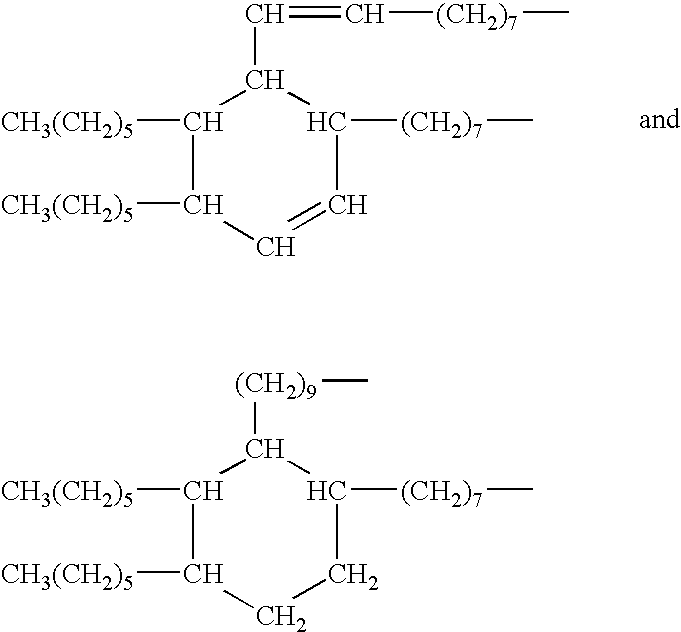Capped dimer acid polyesters in personal care applications
a dimer acid polyester and polyester technology, applied in the field of polyester compounds, can solve the problems of unreacted vinyl monomer that is very undesirable in personal care applications, and achieve the effect of improving skin deposition and lowering the critical micelle concentration
- Summary
- Abstract
- Description
- Claims
- Application Information
AI Technical Summary
Benefits of technology
Problems solved by technology
Method used
Image
Examples
example 13
Dimer Acid
Dimer acid is an item of commerce available from a variety of sources including Cognis. It is the reaction product of linoleic acid and oleic acid. It conforms to the following structure; ##STR5##
example 14
Hydrogenated Dimer Acid
Hydrogenated dimer acid is an item of commerce available from a variety of sources including Cognis. It is the reaction product of dimer acid and hydrogen. It conforms to the following structure; ##STR6##
(C) Capping Carboxylic Acids
The capping carboxylic acids are fatty acids available from a variety of source including Cognis.
It should be clearly understood that the use of the term "acid" when used as a raw material in this section would also include methyl ester and triglyceride. All three classes are functional. When the acid is reacted water is produced, when the methyl ester is used methanol is produced, and when the triglyceride is used glycerin is produced.
Polyester General Process
The esterification reaction is carried out by reacting the specified amount of the specified raw materials at a temperature of between 180 and 220.degree. C. Water is removed during the reaction. The esterification reaction can be carried out with or without catalyst, however ...
PUM
| Property | Measurement | Unit |
|---|---|---|
| temperature | aaaaa | aaaaa |
| temperature | aaaaa | aaaaa |
| temperature | aaaaa | aaaaa |
Abstract
Description
Claims
Application Information
 Login to View More
Login to View More - R&D
- Intellectual Property
- Life Sciences
- Materials
- Tech Scout
- Unparalleled Data Quality
- Higher Quality Content
- 60% Fewer Hallucinations
Browse by: Latest US Patents, China's latest patents, Technical Efficacy Thesaurus, Application Domain, Technology Topic, Popular Technical Reports.
© 2025 PatSnap. All rights reserved.Legal|Privacy policy|Modern Slavery Act Transparency Statement|Sitemap|About US| Contact US: help@patsnap.com



